Despite an uptick in construction starts nationwide last year, the industry’s lingering doldrums continued in California. Commercial and multifamily building starts across the country rose 25% from 2021 to $308.4 billion in 2022, according to Dodge Construction Network. But state construction starts last year declined 10% from 2021 figures, reaching just $52 billion.
Still, the West Coast saw an impressive portfolio of projects beginning, with notable entries for health care, education and entertainment. The projects listed broke ground between Jan. 1 and Dec. 31, 2022—in California and Hawaii for ENR California, and in Alaska, Oregon and Washington for ENR Northwest.
The annual survey includes information from Dodge Data & Analytics and from information provided by construction teams to ENR for work exceeding $100 million.
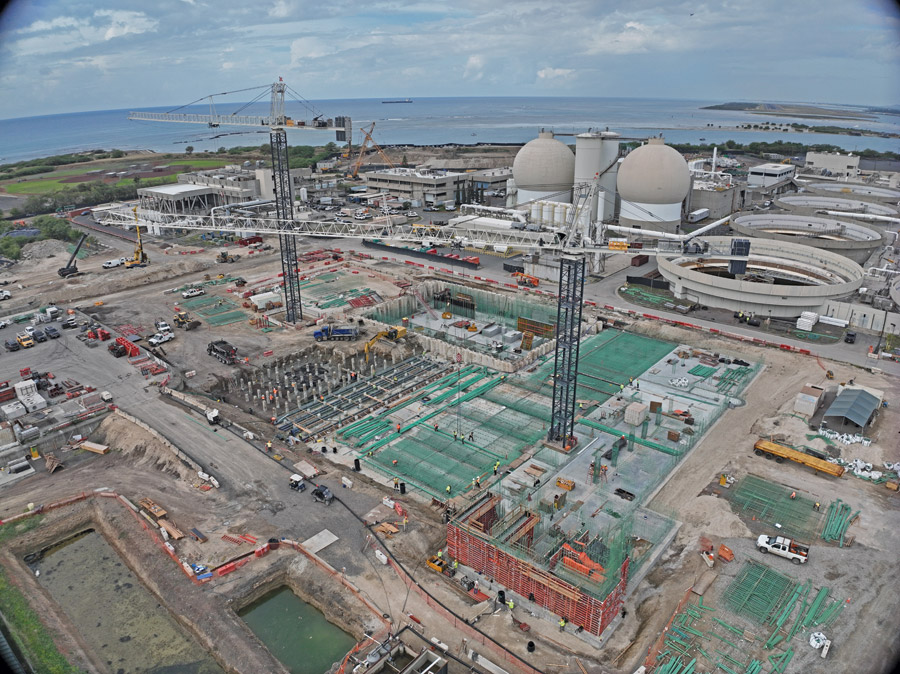
The $422-million Sand Island Wastewater Treatment Plant Secondary Treatment Phase 1 in Honolulu.
Photo courtesy Hensel Phelps
Golden State Drop-Off
In California, the biggest slowdown was in commercial building, which dropped 15%.
AGC reports, however, that from February through March this year, the state led the nation in increased construction jobs, suggesting a rise in starts for this year. In the Pacific Northwest, momentum seems to be holding steady with the national trend. Seattle’s $6.8 billion was one of the nation’s top 10 markets for commercial and multifamily starts through the first half of 2022, Dodge noted.
The woes of the industry in 2022 were due to a number of causes. One key issue was supply chain pressures that increased project costs and delays. “Volatility for pricing associated with materials has been the highest in the past two decades,” says Damian Buessing, Southern California regional vice president for Hensel Phelps. “These challenges will likely continue for the foreseeable future as the steady demand for commodities continues.”
“We are optimistic about our backlog, pipeline of work and strong client relation-ships.”
—Alec Banta, Executive Vice President, McCarthy Building Cos.
The other major issue was staffing, a problem that is unlikely to be resolved soon. “The skilled labor shortage that existed prior to COVID has been exacerbated as industries ramped up their recovery efforts in 2021 and 2022,” says Michael Neher, a project manager with Sundt. “Skilled labor shortages are, and will be for the next decade, the single largest threat to the construction industry.”
But there is plenty of reason for optimism, says Alec Banta, executive vice president at McCarthy Building Cos. “After several very strong years of unprecedented growth in our industry, we are optimistic about our backlog, pipeline of work and strong client relationships.”
The number of high-profile and top-dollar construction starts on the West Coast in 2022 would seem to bear out the rosier outlook. And leading the way were health care facilities.
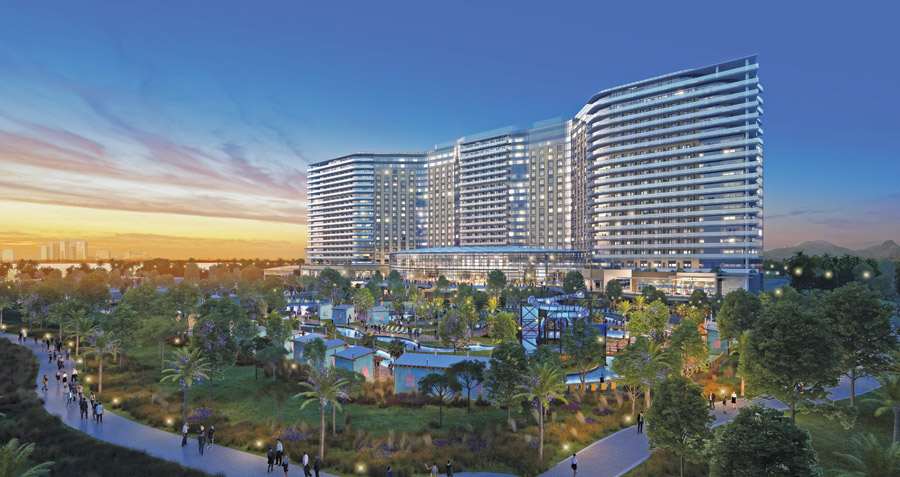
The $906-million Gaylord Pacific Resort Hotel and Convention Center.
Photo courtesy Mortenson | McCarthy
Health Care in Good Shape
Topping all regional projects was the $3.75-billion UC Davis Health Medical Center California Tower in Sacramento, a 14-story facility and five-story pavilion adjacent to the existing building. Designed by SmithGroup and under construction by McCarthy Building Cos. as a progressive-design-build contract, the 950,000-gross-sq-ft building is expected to achieve seismic safety compliance, additional service capacity and enhanced operational efficiency. On schedule, the 332-room mid-rise is expected in June 2030.
The site is on the east end of the existing hospital, so the major challenges include working on an operating medical campus and connecting to standing facilities, says Jim Mynott Sr., vice president at McCarthy. He notes that innovative methods and technology include pull planning and sharing BIM via a central platform.
“Skilled labor shortages are ... the single largest threat to the construction industry.”
—Michael Neher, Project Manager, Sundt
In Torrance, Calif., Hensel Phelps, with HMC Architects and CO Architects, is on schedule to deliver the design-build $1.11-billion Harbor-UCLA Medical Center Replacement Program on the 72-acre campus by the end of 2027. Completion will ensure that the center complies with Senate Bill 1953, effective 2030, requiring all state hospitals to be structurally resilient during a major earthquake. Major components include a 545,000-sq-ft acute care inpatient tower with 347 beds; a 373,000-sq-ft outpatient treatment and support building; and a 487,000-sq-ft above-grade parking structure with 1,527 stalls.
The team has been responding to supply chain delays by prioritizing long-lead items early and working on an active health care campus by focusing on phasing, logistics and wayfinding. “The site has limited access, laydown space and general mobility,” explains Khristina Stone, preconstruction manager at Hensel Phelps. “Our phasing plan has been developed to treat this as a constrained downtown site, and we are requiring our trade partners to provide just-in-time deliveries.”
Hensel Phelps also started work on the $515-million Kaiser Permanente Riverside Medical Center-Bed Tower Expansion/Parking Structure/CUP Expansion in Riverside, Calif. It is an integrated project delivery/lump sum contract tracking an October 2026 completion. The five-story 292,000-gross-sq-ft project includes a tower with approximately 152 beds; a 1,151-stall parking structure; central utility plant upgrades; sitework; and related campus backfill/remodel projects in and around the hospital.
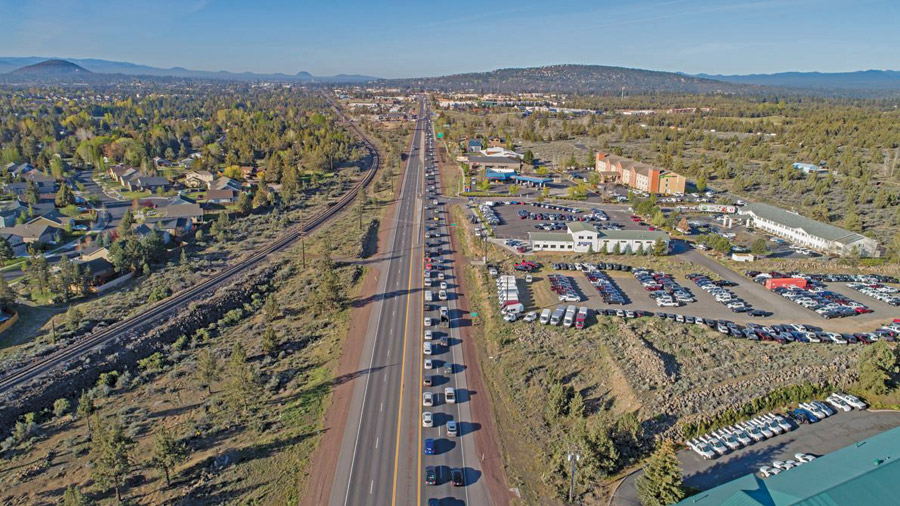
ODOT’s $175-million US 97 & US 20 Bend North Corridor.
Photo courtesy ODOT
Big Dollar Grab Bag
Devcon Construction is working on an office megaproject in San Jose, the $1-billion Platform 16 Office/Underground Parking for Boston Properties. And exemplifying the resurgence of the hospitality construction sector is the $906-million Gaylord Pacific Resort Hotel and Convention Center in Chula Vista for RIDA Development, a McCarthy joint venture with Mortenson.
Among other California projects, the $587.7-million Warner Red Hill residential mixed-use community on a 14.7-acre site in Santa Ana includes four wrap-style buildings totaling 1,100 apartment homes with four five-story parking structures comprising 2,455 stalls.
Pinner Construction is working on one of the largest education starts in California, the design-build $220-million Abraham Lincoln High School Comprehensive Modernization for the Los Angeles Unified School District. CannonDesign is the architect. On schedule for substantial completion of the first interim housing and make-ready phase of work this summer, the project includes new buildings, voluntary seismic strengthening of existing historic buildings and extensive site improvements.
The top project in Hawaii was the $422-million design-bid-build Sand Island Wastewater Treatment Plant Secondary Treatment Phase 1 in Honolulu, expected for a December 2026 completion by Hensel Phelps. Work on the 24-acre site includes construction of the intermediate pump station/blower building; fine screen structure; process reactors, membrane bioreactors and their service building, the thickener building; odor control systems; and secondary treatment effluent flow routing.
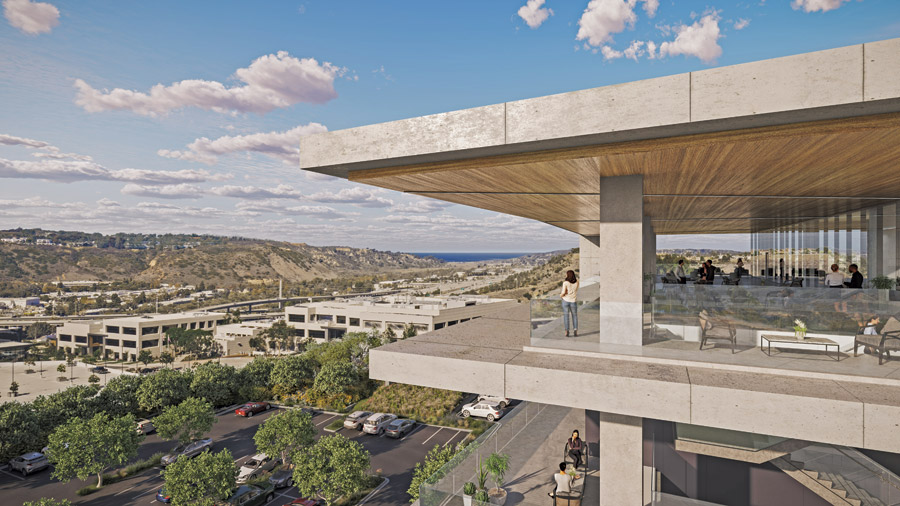
The $121.5-million BioScience Properties Headquarters Point in San Diego.
Rendering courtesy McCarthy Building Cos.
Northwest Projects Boast Variety
Leading the Northwest region in 2022 was the $600-million Darigold Plant in Pasco, Wash., which will process approximately 8 million lb of milk per day from more than 100 dairy farms in surrounding communities when fully operational in 2024. This is the largest investment in the co-op’s 104-year-history, and the company plans to hire approximately 200 employees. E.A. Bonelli & Associates is the architect and Miron Construction the builder.
In Sherwood, Wash., Sundt Construction is leading the $420-million Willamette Water Supply System Water Treatment Plant, which is projected for completion in March 2026. The seismically resilient facility will treat 60 million gallons per day initially, with future expansion capabilities to accommodate a total of 120 MGD. The plant will process water to meet drinking water standards including coagulation, ballasted flocculation, intermediate ozonation, ultraviolet light disinfection, granulated activated carbon and sand filtration, and chlorine disinfection.
In a CMGC role, Sundt is directing nearly 70 scopes of work on the project, which includes roadway improvements, setbacks and a forested overlook. Design coordination has been the focus, particularly the owner’s industry-leading seismic requirements. “Each of the major processing systems not only has to be seismically engineered but also seismically certified. This requires that every part and piece of the system is certified to resist and survive a seismic occurrence,” explains Sundt project manager Michael Neher.
One of the region’s top roadway starts is the $175-million US 97 & US 20 Bend North Corridor, the first design-build for the Oregon Dept. of Transportation in 10 years. STV is serving as the owner’s engineer; Kiewit is the general contractor. Expected for completion in December 2024, the project realigns one of the most congested portions of US 97 and improves a section of US 20. Ramp connections, pedestrian and bicycle facilities, ADA ramps and crossings will be improved and installed and a new transit stop for Cascade East Transit will be added.
McCarthy is also busy downtown at the California state capital with the $158-million Dept. of General Services, Gregory Bateson Building Renovation. Deemed historically significant in 2016 for its design and construction innovations, the four-story, approximately 308,000-sq-ft building will undergo a number of upgrades and remedies.
“One of the major challenges of this renovation project has been striking a delicate balance when restoring the original look and feel of the existing building in every aspect possible while upgrading to current construction codes and complying with historical preservation standards,” says Andrew Dessling, project director.
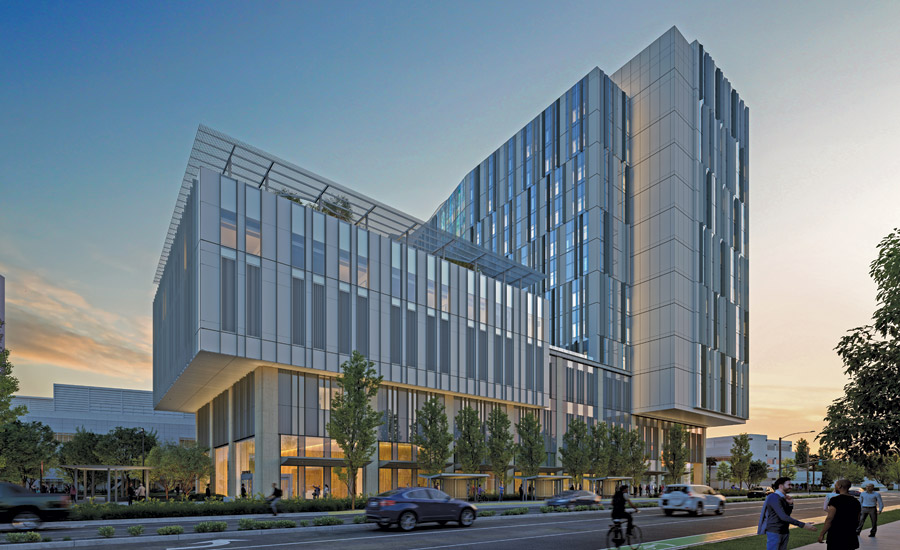


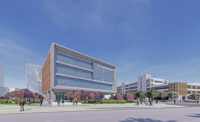

Post a comment to this article
Report Abusive Comment